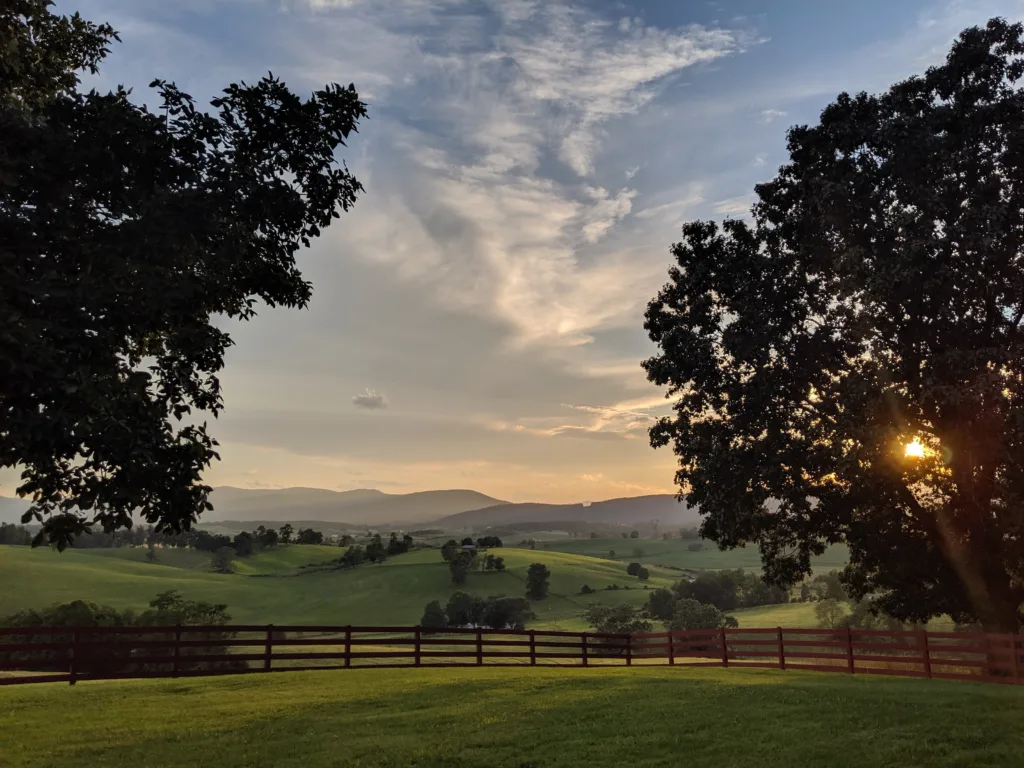Located on the east coast of the United States, Virginia is a state known for its diverse landscapes and rich history. From the rolling Blue Ridge Mountains to the sandy beaches of the Chesapeake Bay, the state offers a wide range of environments for residents and visitors to enjoy. One important factor to consider when gardening or landscaping in Virginia is the planting zone.
Virginia is divided into multiple USDA Hardiness Zones, each of which is determined by the average minimum temperature in a given area. These zones serve as a guide for gardeners, helping them choose plants that are best suited for the local climate.
The majority of Virginia falls within Zones 6a to 8a, with some areas even reaching Zone 9a. The northern part of the state, including cities like Arlington and Fairfax, generally falls into Zone 7a. This means that the minimum temperatures in these areas can range from 0 to 10 degrees Fahrenheit (-18 to -12 degrees Celsius).
In Zone 7a, gardeners have a variety of options when it comes to plant selection. Many popular flowers, shrubs, and trees thrive in this zone, including azaleas, camellias, and dogwoods. Additionally, vegetables like tomatoes, peppers, and cucumbers can be grown successfully in Zone 7a, as long as proper care is taken to protect them from frost in the colder months.
Moving further south, towards Norfolk, Virginia, the climate becomes slightly milder. Norfolk falls into Zone 8a, which is characterized by minimum temperatures ranging from 10 to 15 degrees Fahrenheit (-12 to -9 degrees Celsius). This allows for a wider range of plant options, including tropical plants like palm trees and citrus fruits.
It is important for gardeners in Virginia to consider the specific microclimates within their area. Factors such as elevation, proximity to bodies of water, and urban heat islands can all impact the local climate and may result in slightly different growing conditions than the general zone designation suggests. Consulting with local nurseries or gardening experts can help ensure the best plant choices for a specific location.
Virginia’s diverse landscapes and varied planting zones offer a wealth of possibilities for gardeners and landscapers. By understanding the specific zone designation for their area, individuals can select plants that are well-suited to the local climate, resulting in healthier and more vibrant gardens. So, whether you are a seasoned gardener or just starting out, Virginia’s planting zones provide a helpful framework for successful gardening in the state.
Is Virginia Zone 7a Or 7b?
Virginia is a state that falls into both USDA Hardiness Zones 7a and 7b. The USDA Hardiness Zone map is a tool used by gardeners and horticulturists to determine which plants are most likely to thrive in a given area based on average annual minimum temperatures.
Zone 7a in Virginia is characterized by average annual minimum temperatures ranging from 0 to 5 degrees Fahrenheit (-17.8 to -15 degrees Celsius). This means that plants selected for this zone should be able to withstand occasional cold snaps and frost.
On the other hand, Zone 7b in Virginia has slightly higher average annual minimum temperatures, ranging from 5 to 10 degrees Fahrenheit (-15 to -12.2 degrees Celsius). This zone experiences milder winters compared to Zone 7a, but still requires plants that can tolerate frost and occasional cold spells.
It is important to note that while the USDA Hardiness Zone map provides a general guideline, microclimates within a specific area can vary. Factors such as elevation, proximity to bodies of water, and urban heat islands can influence local temperatures, potentially creating microclimates that differ from the broader zone classification.
Virginia is classified as both Zone 7a and 7b according to the USDA Hardiness Zone map. Gardeners and plant enthusiasts in Virginia should consider these zone classifications when selecting plants for their gardens, but also take into account any unique microclimatic conditions that may exist in their specific location.

What Planting Zone Is Richmond Virginia?
Richmond, Virginia is located in planting zone 7a. This zone is characterized by average minimum temperatures ranging from 0 to 5 degrees. It is important to note that this average should not be confused with the lowest temperature ever recorded or even the lowest temperature possible in this zone. When selecting shrubs, plants, and trees for Richmond’s climate, it is crucial to choose those that are ideally suited for planting zone 7a. These plants will be better adapted to withstand the temperature fluctuations and environmental conditions specific to this zone.
Conclusion
Virginia is a diverse and vibrant state located on the East Coast of the United States. From the scenic mountains of the Appalachian range to the stunning coastline along the Chesapeake Bay, Virginia offers a wide range of natural beauty and outdoor recreational opportunities.
One of the standout features of Virginia is its rich history. As one of the original 13 colonies, the state played a pivotal role in the founding of the United States. Historic sites such as Jamestown, Williamsburg, and Monticello allow visitors to step back in time and learn about the early days of American history.
In addition to its historical significance, Virginia is also known for its thriving cities and cultural scene. The capital city of Richmond is a hub of arts, culture, and entertainment, with a growing food and craft beer scene. Northern Virginia, including the cities of Arlington and Fairfax, is a bustling metropolitan area that is home to many high-tech companies and government agencies.
Virginia’s climate varies across the state, with cooler temperatures in the mountainous regions and milder temperatures closer to the coast. This diversity allows for a wide range of agriculture and horticulture, with different areas of the state being suitable for growing various crops and plants.
Virginia offers something for everyone. Whether you’re interested in history, nature, or city life, this state has it all. With its picturesque landscapes, rich heritage, and thriving communities, Virginia truly is a remarkable place to live or visit.
